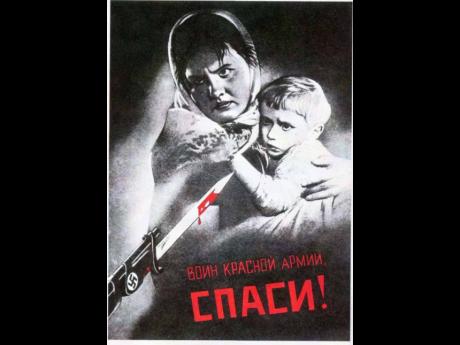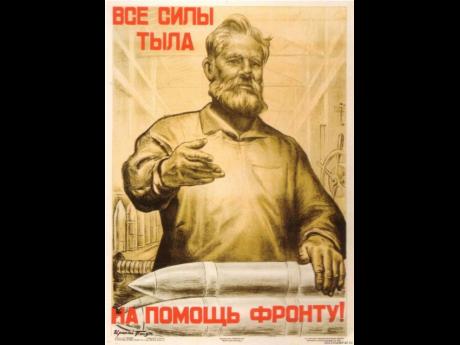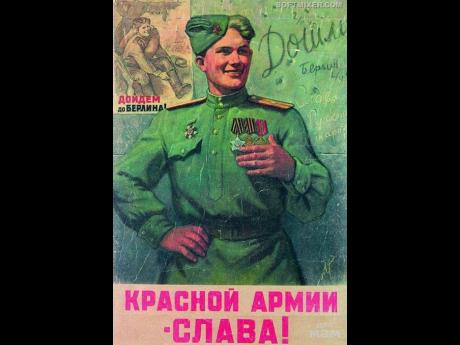Art that painted the war
“There is no greatness where there is not simplicity, goodness, and truth,” wrote Leo Tolstoy in War and Peace. These words sum up life and everything else in it. But then words hardly matter when guns start blazing. It happened between 1939 to 1945. Clouds of war engulfed the world.
Soldiers were in the line of fire, and the going was tough, and away from the thick of action, there was a machinery producing posters as visual aids to boost the soldiers’ morale.
“As an example of the role of art in contributing to the victory in World War II, one can cite Soviet posters during the Great Patriotic War of 1941-1945. They called on all the people of the vast country to oppose fascism,” said Vladislav Kurbatskiy, chargé d’affaires at the Embassy of Russian Federation in Jamaica. “It was this art that inspired and raised the spirit of the fighters.”
These posters were a mix of varied styles – some crude caricatures, others more elaborate paintings.
At their inception, these posters – termed propaganda posters in the West – were dramatic. Some well-known posters of that time were “Mother Russia calls” (1941) by M.Toidze and “Red Army Warrior – save us!” (1942) by VG.Koretskiy. During that period, enemy troops were charging towards Moscow, giving the artists an opportunity to give their rendition of the war, at the same time highlighting the glory of their heroes. Later, the posters started depicting life in the times of war.
When the Soviet Union launched a full-scale attack against Nazi troops, inspiration, hope, and glory became the central themes, and as World War II was coming to an end, the posters spoke of unity, defeat of the enemy, and victory.
HORRORS OF WAR
“In the most vivid images,” Kurbatskiy said, “they (the posters) showed all the horror of the war and all the inhumanity of fascism, which decided to conquer the whole world.”
Art imitates life, and that era of human history became pivotal for the artists to highlight life in time of war.
“Many of these posters became so famous that they are still used today and are considered true masterpieces of the art of poster art,” Kurbatskiy said. “These posters can touch the heart, awaken special feelings even now, when many decades have passed since the terrible war that claimed the lives of millions of soldiers and civilians.”
These posters were undoubtedly a work of art, which chronicled the war, and left a mark in history.
In his poster “Glory to the Red Army!” (1945) L.Golovanov painted Soviet sniper Golosov and inserted his previous work and scribbled on the wall on the right “We reached!”. The irony is that though this poster is celebratory, Golosov didn’t make it to Berlin – he was killed in 1944.
“These stories are only one of many reasons and “whys” for Soviet and Russian people to call the May 9 (commemorating surrender of Nazi Germany) ‘the holiday with tears in the eyes’,” said Aleksei Sazonov, head of the consular section, Embassy of the Russian Federation in Jamaica. “ The phenomenal feat to celebrate and incredibly painful to remember.”





